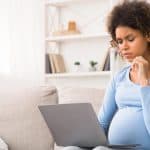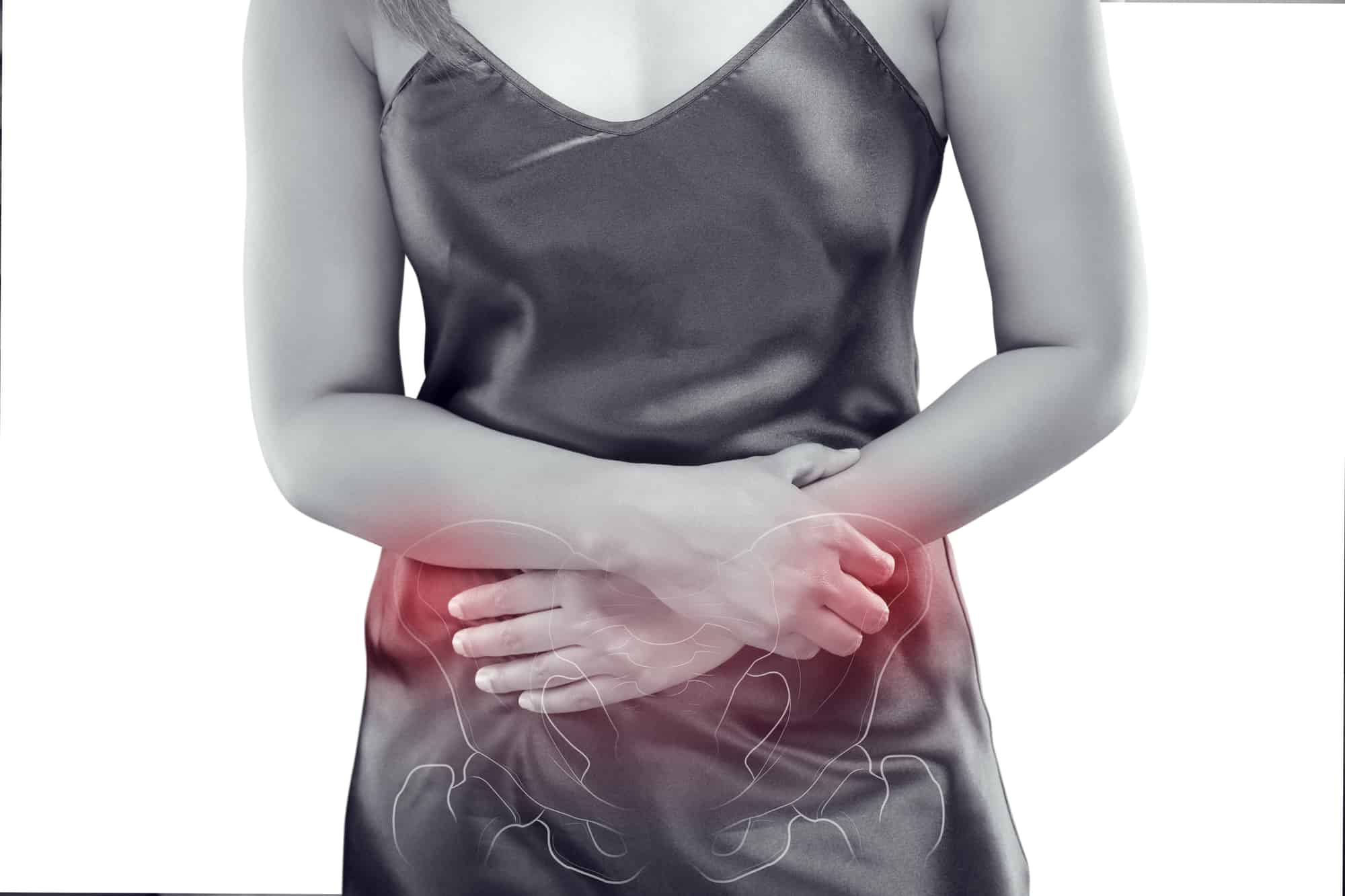
Is pelvic pain ruining your pregnancy?
Would you like some tips on how to alleviate the pain?
Pregnancy can be one of the most joyous occasions in your life. But while there is great excitement about eventually meeting your new baby and becoming a mother, it can also be physically exhausting, especially in the third trimester and the later stages of your pregnancy.
Plus (although most are minor), very few women are lucky enough to enjoy pregnancy with zero side effects.
In most cases, there is usually some heartburn and indigestion, lower back, foot ankle and knee pain, and digestive symptoms, but the most common complaint amongst pregnant women is pelvic pain.
Studies show that around 70% of women suffer pelvic pain at some stage of their pregnancy.
During pregnancy, pelvic pain symptoms include pain in the pelvic region, hips, and lower back area.
There may be other symptoms, including groin pain, clicking noises around the hips and pelvis, and the pain may worsen when you climb the stairs, roll over in bed, walk long distances or on uneven surfaces and getting out of the car.
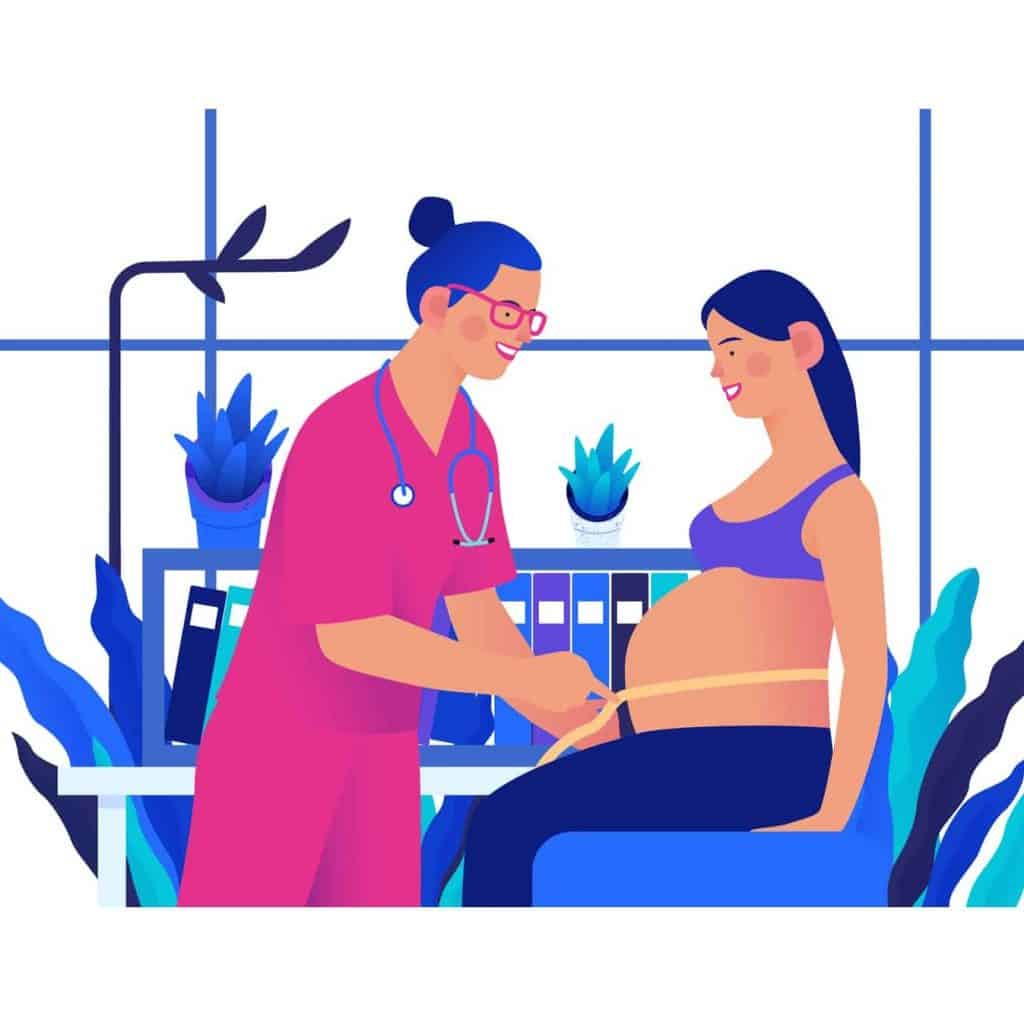
We also refer to this type of pain as Pelvic Girdle Pain or PGP – a catch-all term that describes pain in the front of the pelvis as well as pain that radiates down into the hips and legs, buttocks, and SI (sacroiliac) joints.
One type of pelvic pain can be referred to as symphysis pubis dysfunction (SPD), although we don’t tend to use that term anymore.
But most importantly, it can be super painful and interfere with all aspects of your life and enjoyment of your pregnancy.
But don’t worry. Although it’s normal to worry in pregnancy, pelvic girdle pain doesn’t affect your growing baby – they sleep soundly right through it.
You’re the only one who can feel the pain and discomfort.
So, what’s going on inside your body to cause so much pain?
To help you make sense of PGP and pelvic pain during pregnancy, in this blog, we examine the causes and the symptoms and explore what you can do to fix them.
More Pregnancy Blogs From Focus Osteopathy
Pregnancy: Dealing With Back Pain When Sleeping
How To Strengthen The Pelvic Floor
How does our modern lifestyle affect posture?
What Causes Pelvic Pain In Early Pregnancy?
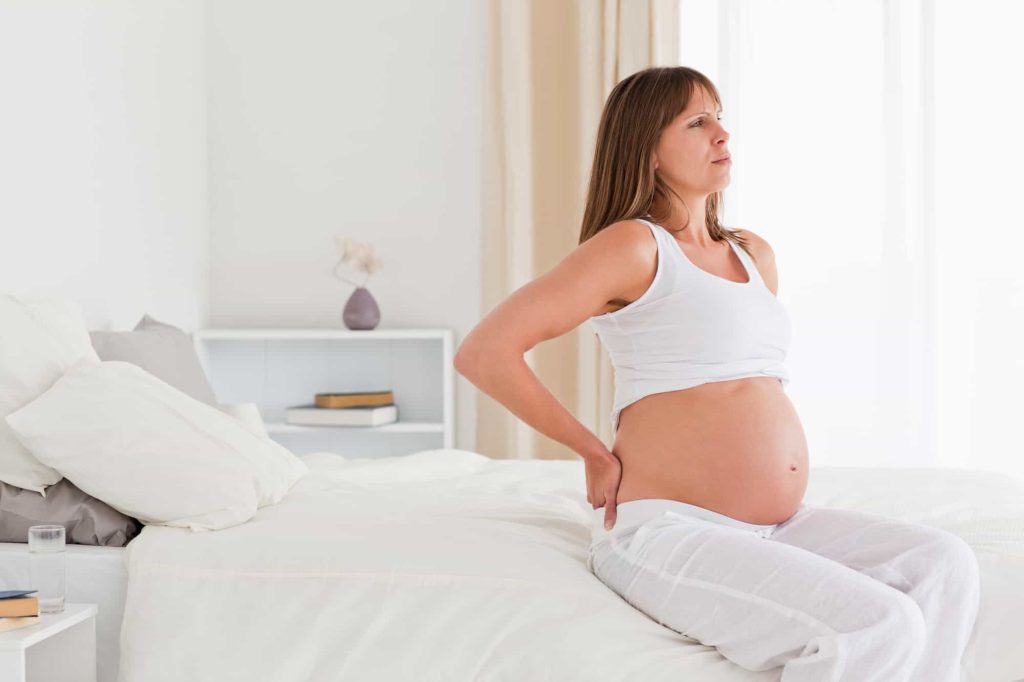
If you’re still in the first trimester, it might be a surprise to have pelvic pain so soon into your pregnancy.
But rather than being anything to do with the baby, pelvic pain in early pregnancy is more likely due to the release of hormones.
Specifically, when you become pregnant, your body produces Relaxin (a hormone).
Relaxin helps the ligaments and tendons in your pelvic region become more flexible to accommodate your baby and growing womb and later enable childbirth.
But apart from the role played by Relaxin in softening/stretching the ligaments, your expanding baby bump is also responsible for altering the weight distribution in your body, especially when moving.
The shift in weight distribution can lead to pain in the pelvis and hips because your body continues to produce Relaxin throughout your pregnancy.
So, as your pregnancy progresses and the production of Relaxin increases, so does the likelihood of your pelvic pain intensifying.
What Causes Pelvic Pain In The Later Stages Of Pregnancy?
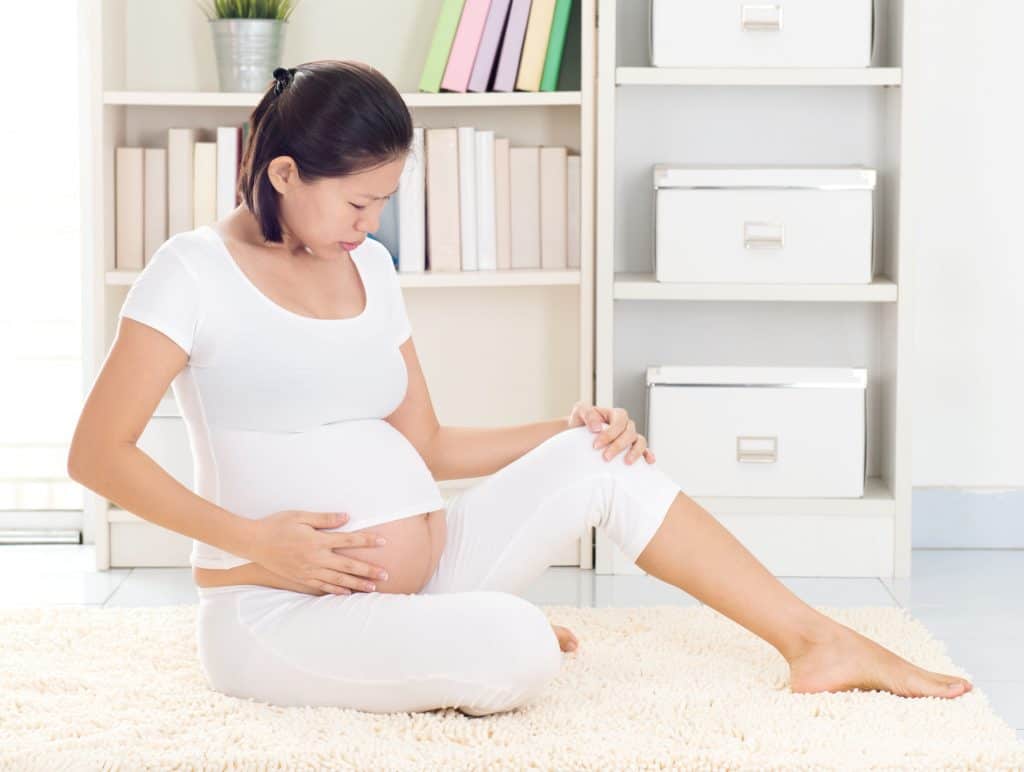
Pelvic pain in the later stages of pregnancy in the 2nd and 3rd trimester, from 12 weeks onwards, can also be due to the continued production and release of the hormone Relaxin.
Production of this hormone continues throughout pregnancy and intensifies just before childbirth – further loosening the tendons and ligaments in preparation for your baby’s arrival.
But apart from the role played by Relaxin in weakening/stretching the ligaments, your expanding baby bump is also responsible for altering the weight distribution in your body, especially when moving.
In addition, your growing baby can also impact your posture and change how you walk – all of which contribute to pelvic pain.
Once the process of the baby dropping in preparation for labor happens (the baby automatically shifts further down into the pelvis) around 2-4 weeks before delivery, pelvic pain can intensify. Why?
The baby dropping into the pelvis, results in additional stress, widening and pressure on your muscles, joints, and bones in the pelvic area and lower back.
Because when lightning occurs, your baby’s head causes stress and pressure on your muscles, joints, and bones in the pelvic area and lower back.
However, although it can be uncomfortable, the good news is that this symptom signifies that you won’t have to wait too much longer to meet your new baby.
How To Alleviate Pelvic Pain During Pregnancy
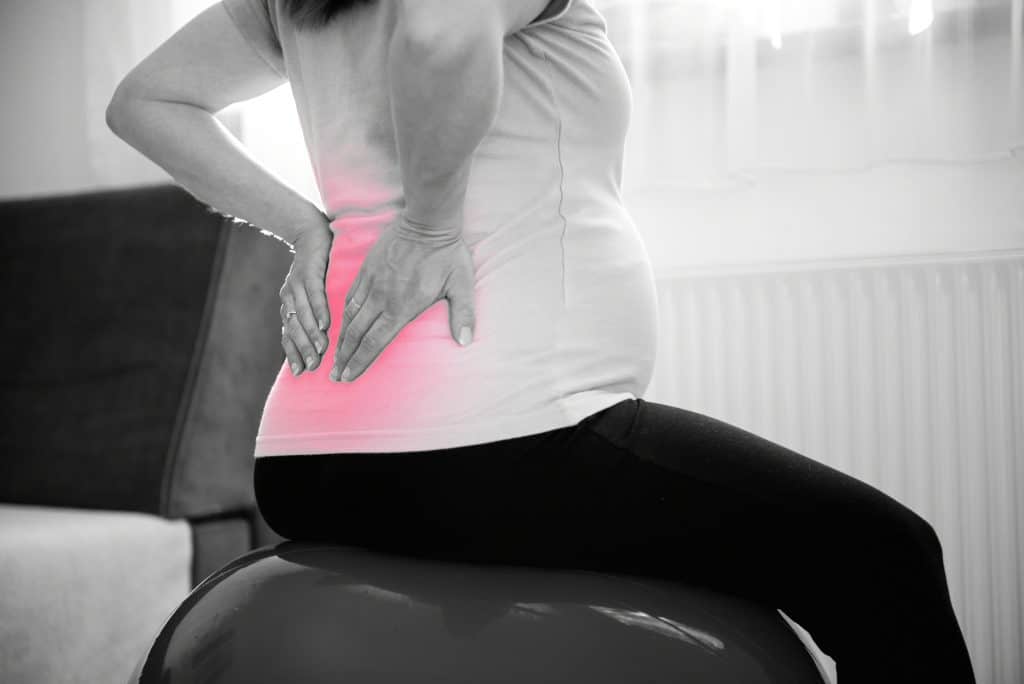
As with most things in pregnancy – like headaches and other minor aches and pains, it is best to avoid pain medication wherever possible to prevent any harm to your developing baby.
But there are many ways to alleviate pelvic pain in pregnancy without reaching for pain pills. However, you should always consult your doctor before embarking on any new course of treatment.
Physical therapy is the most effective way to treat pelvic pain during pregnancy. But here are some of the other ways you can alleviate the discomfort:
- Pregnancy-support aids
Several pregnancy-support aids that are available to buy online can help support your growing bump and make your pregnancy more comfortable.
These include compression pantyhose and belly bands. Compression pantyhose help by compressing your legs and feet – which tend to swell during pregnancy.
They also help to lift and offer support to your belly during different stages of pregnancy – to take the pressure off your pelvic area, lower back, and hips.
Pregnancy “Belly bands” serve a similar purpose and raise your bump while providing support to the pelvic and lower back areas, both of which are highly susceptible to pregnancy-related pain.
- Prenatal massage
Having a professional prenatal massage can help reduce pelvic pain by relieving stress and tension, improving blood circulation, and reviving the ligaments and muscles that work so hard during pregnancy.
When your circulation improves after a massage, you will feel less discomfort and hopefully get a better night’s sleep.
This added benefit is especially helpful because good quality sleep reduces pain levels. First, however, make sure you choose a qualified and experienced prenatal massage therapist with extensive experience in maternal care.
Their knowledge of how much pressure should or should not be applied – and what massage oils and essential oils are safe to use during pregnancy – ensures the safety of you and your unborn child.
- Stretching exercises
If your doctor has said it’s ok for you to exercise (within certain prenatal limits, of course), then specific stretching movements and exercises can be hugely beneficial to treating and preventing pelvic pain during pregnancy.
Stretching can help to relieve some of the discomfort and pain in the early stages of your pregnancy.
However, before embarking on an at-home stretching routine, we recommend you consult with a Physical Therapist to learn specific safe movements for the hips, pelvic area, back, and stomach.
For example, pelvic tilt exercises can reduce lower back and pelvic pain by helping to improve your posture and strengthening your muscles and ligaments.
You may also want to try a Prenatal Pilates or yoga class with a range of low-impact moves that can help you treat and prevent pelvic pain.
Low-impact exercise can also improve your sleep. It may also contribute to easier labor and delivery and help you recover faster after the birth.
How Physical Therapy Treats Pelvic Pain During Pregnancy
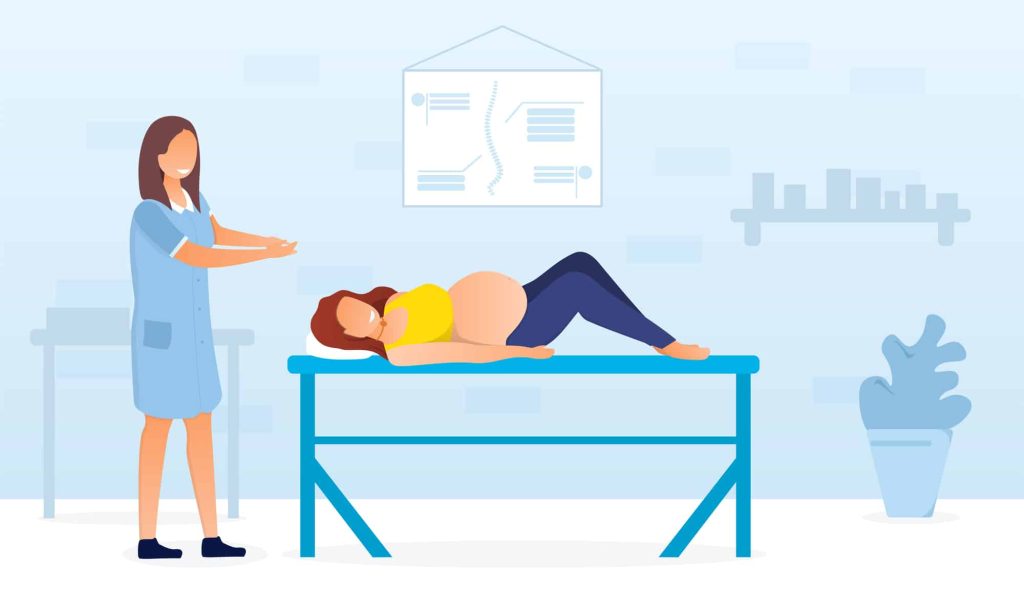
When pelvic girdle pain affects your ability to move around without pain, it can detract from the enjoyment of carrying your baby and being pregnant.
The pain can also keep you awake at night, which isn’t healthy for you or your baby.
So, it’s a good idea to seek treatment for the pain rather than just endure it, so you can get back to enjoying your pregnancy and give your baby the best start possible.
We evaluate your symptoms, find the root cause and work with you to reduce the pain and prevent it from reoccurring.
The treatment for pelvic pain during pregnancy is specific to your set of symptoms and the stage you’re at in your pregnancy.
But is likely to include a combination of manual joint and muscle manipulation and therapeutic stretching and strengthening exercises – all of which are 100% safe during pregnancy.
After treatment, you can look forward to finally being able to “glow” through the rest of your pregnancy and enjoy every moment of this precious time in your life.
Not sure whether Physical Therapy is right for you at this stage of your pregnancy?
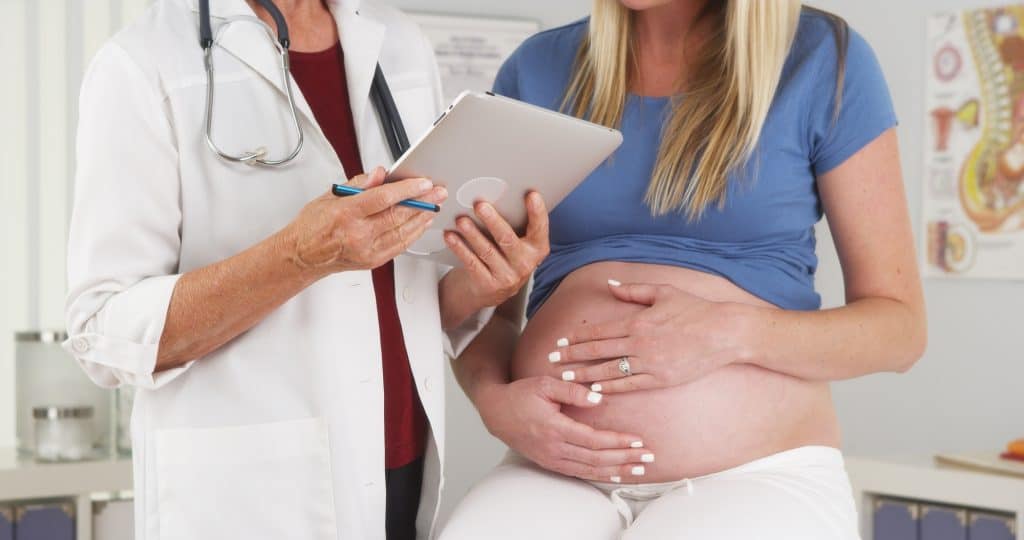
Why not book a free consultation with one of our women’s health specialists?
We offer all patients a free, no-obligation, 30-minute consultation to discuss their PGP and pelvic pain during pregnancy issues and get immediate advice from a trained physical therapist, either over the telephone or in the clinic.

